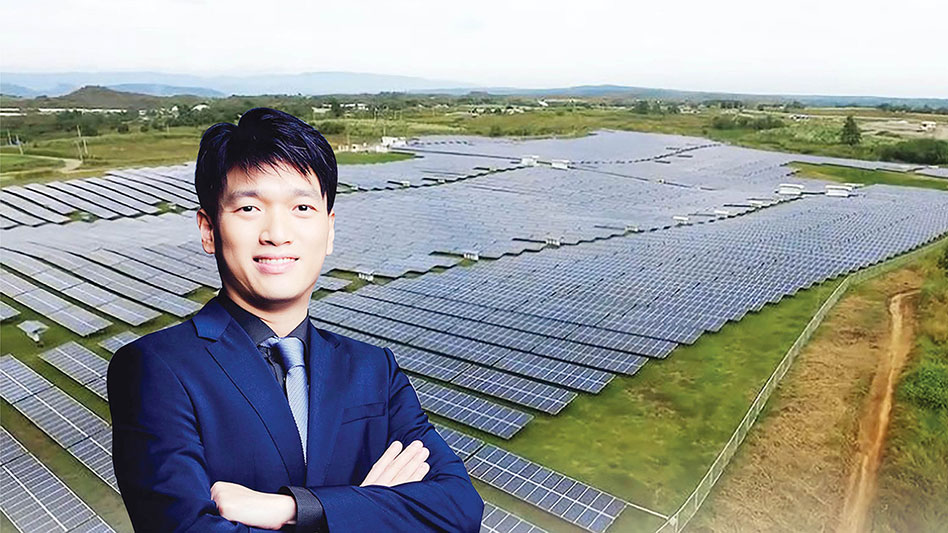
Inspiration From Irritation
By RJ Ledesma

The Philippines is hungry for energy. With its robust economy, the country’s peak power demand is growing at around 5% every year, set to expand from 17,331 megawatts (MW) in 2023 to 68,483 MW in 2050, according to the Department of Energy. To answer these energy needs, the founders of Megawide Construction Corp. established Citicore Renewable Energy Corp. By doing so, they would challenge entrenched conglomerates in the energy industry. Along the way, they would also invent a new way to rapidly grow the company to achieve their ambitious vision of 5,000 MW of renewable energy in five years.
I spoke to Citicore’s CEO Oliver Tan about his journey at the head of the company to gain some insight on how a young company can take on giant conglomerates in its industry. Oliver was previously the Chief Financial Officer of Megawide Construction Corp. — an important link that proved pivotal in driving Citicore closer to achieving its lofty goals. Mr. Tan’s journey is one of financial innovation and perseverance. It’s also an underdog story, an inspiration to entrepreneurs everywhere.
HAVE A CLEAR VISION
“Everything starts with a clear vision,” he says.
For Citicore, that vision was its goal to produce 5,000 MW of renewable energy in five years, or a gigawatt every year — a goal set by the company’s chairman, Edgar Saavedra.
Citicore is very close to achieving this goal. Currently it operates 10 solar farms with a gross installed capacity of 285 MW. And more solar farms with a capacity of 250 MW will go online later this year. The company is about to begin construction on four offshore wind platforms with a total capacity of 362 MW. It is also experimenting with runoff river hydro power and has a long pipeline of solar projects for the upcoming years.
For Oliver Tan, the beginning of Citicore goes back to his joining Mr. Saavedra’s Megawide. In what he calls a “Voltes V” moment, Saavedra and Tan joined forces one Christmas Eve. Tan’s role? To guide the IPO of Megawide, and later on, to become its CFO.
Behind a successful IPO supported by Henry Sy, Megawide would rise to prominence in the industry to build projects from transport to infrastructure. It is famous for the Mactan Cebu Airport and is currently building the Metro Manila Subway.
In 2014, the partners decided to found Citicore Renewable Energy with Tan as its CEO.
“We entered into utility,” Mr. Tan says about their decision. “So during that time, if we are to enter [the energy industry] via conventional coal, there’s no advantage. Because the big boys are there already. So we really had to find a niche. Where can we possibly excel? That’s when we thought of renewable energy.”
Focusing on their strengths of partnership with government — Citicore’s primary customer — and their expertise in world-class engineering, the partners knew they could make Citicore work.
Mr. Tan said, “What’s going to happen to power is like what happened to the automobile, to the telecom industry, from horse carriage to combustion engine, right? And then for telecom, from analog to digital. With power, we thought, ‘Okay, this is going to be something big because basically you’re harnessing nature.’”
A REIT FOR RENEWABLE ENERGY
One major hurdle remained: How would Citicore achieve its vision at scale? How would it raise the funds needed? How would it acquire the land required for vast solar farms?
It is here where Oliver Tan’s expertise in finance rose to the fore. Instead of just a basic IPO to raise capital, he turned Citicore’s business into a REIT — a real estate income trust — and established CREIT to complement Citicore Renewable Energy Corp. (CREC).
In essence, with CREIT, Tan turned investing in renewable energy newcomer Citicore into a familiar and reliable investment — like real estate.
He explains, “It works like a mall or office building, right? CREIT owns the land. And then your tenant rents the land from CREIT, puts up a building or a mall, and leases it out to different tenants.
“In this case, CREIT owns the land where Citicorp Renewable puts up the solar farm. So CREC is paying a lease for the use of the land while it is generating electricity to sell to the consumer.
“As Citicorp Renewable is building 1,000 megawatts every year, it will require approximately 1,000 hectares of land. Hence CREIT will also expand its leasing business portfolio.” And ultimately investors in CREIT will benefit as Citicore grows.
THE VALUE OF PERSEVERANCE
Looking back at Citicore’s journey, Tan rightfully takes pride in his achievements, particularly in his successful IPOs.
“We already have three publicly listed entities, Megawide, CREIT, and CREC,” he says. “CREIT was also innovative in the sense that we’re the first energy team, right? That’s my source of joy. Because my passion really is finance.”
However, he was quick to emphasize that it was the whole team that achieved their goals, as well as the value of perseverance.
“It’s not only me,” he continued. “I was fortunate enough to lead a team to create that product. And my biggest joy is we are inspiring startups because we did not inherit [the company] from our family, right? We can compete with the big boys.
“You just need perseverance… Stick to your vision and do it.”
RJ Ledesma (www.rjledesma.com) is a Hall of Fame Awardee for Best Male Host at the Aliw Awards, a multi-awarded serial entrepreneur, motivational speaker, and business mentor, podcaster, an Honorary Consul, and editor-in-chief of The Business Manual. Mr. Ledesma can be found on LinkedIn, Facebook and Instagram. The RJ Ledesma Podcast is available on Facebook, Spotify, Google and Apple Podcasts. Are there entrepreneurs you want Mr. Ledesma to interview? Let him know at ledesma.rj@gmail.com.